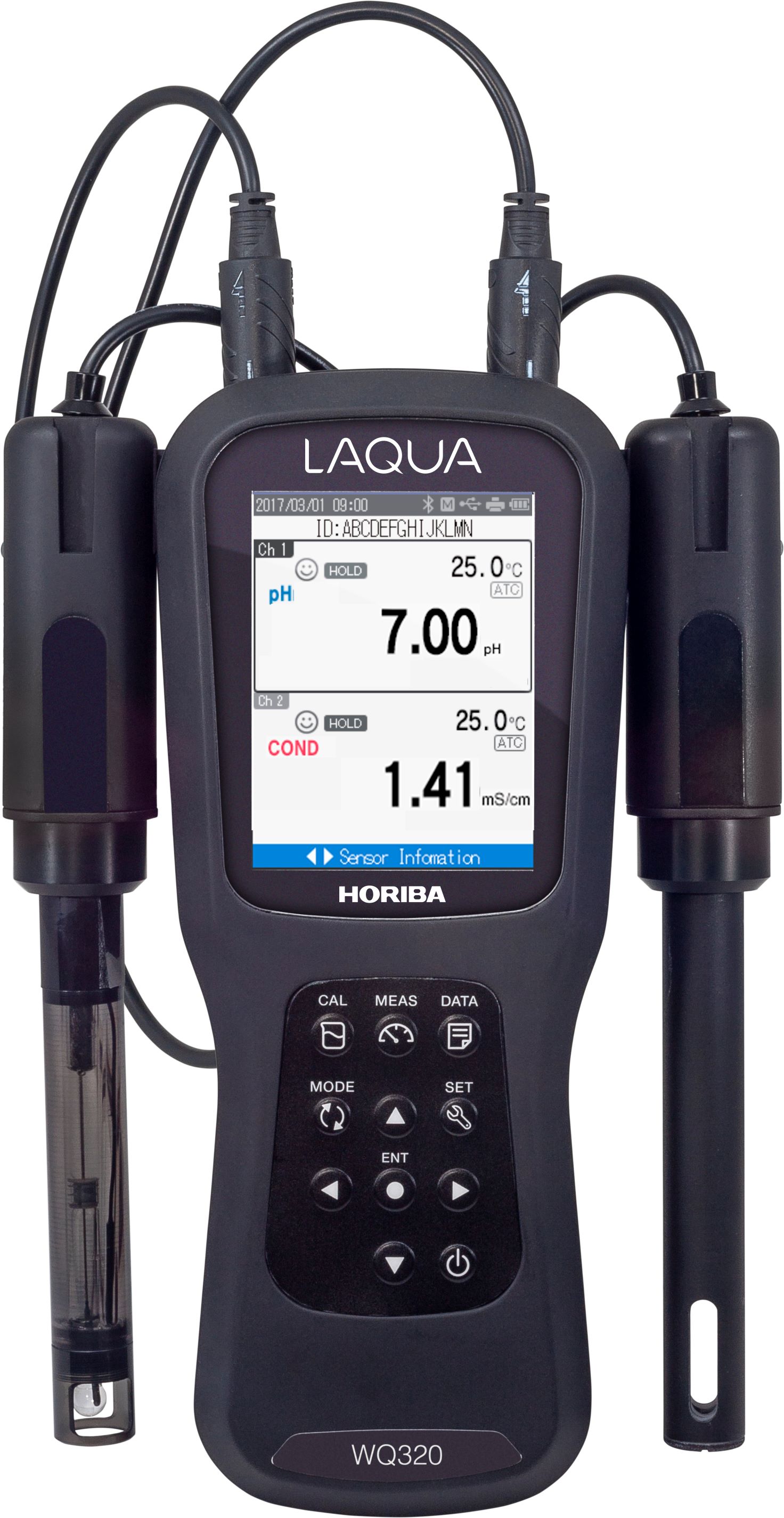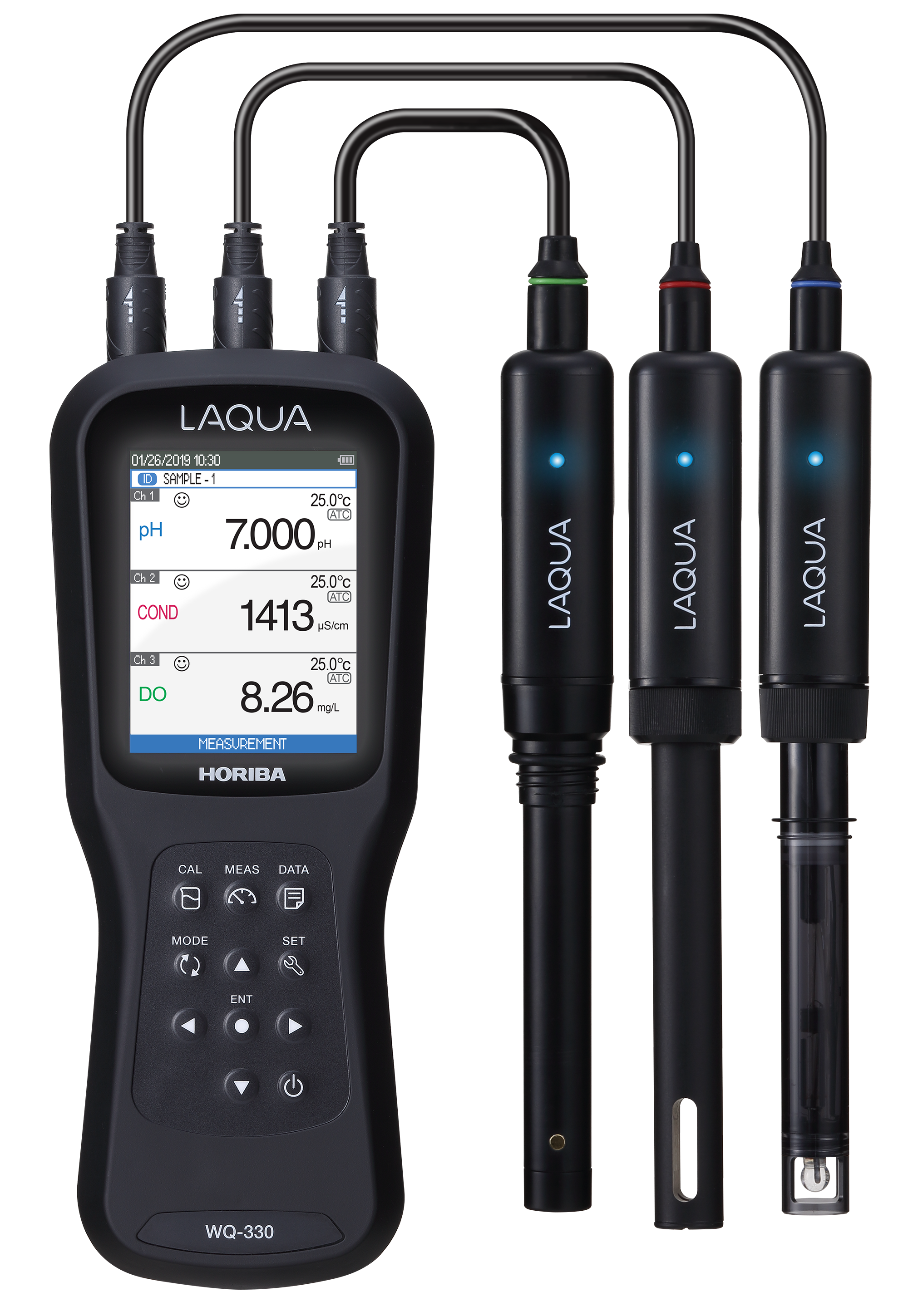HORIBA multi-parameter handheld meters – The WQ 300 series for testing water quality in schools and universities
The digital multi-parameter hand-held measuring instruments from HORIBA – the WQ 300 series for testing water quality in schools and universities.
The use of digital multi-parameter hand-held measuring instruments in educational institutions can be a useful method for detecting and preventing health risks such as gastrointestinal diseases at an early stage. By monitoring and analyzing certain environmental parameters, possible triggers of illness can be identified and appropriate measures can be taken. With the HORIBA handheld measuring instruments of the LAQUA WQ 300 series, the early detection of poor water quality through regular monitoring can be carried out independently, e.g. by the caretaker, the hygiene officer or teachers.
The HORIBA LAQUA WQ handheld testers can measure several parameters such as pH, conductivity and dissolved oxygen, which are used to check whether the water is safe and hygienically sound.
Here are some reasons why the LAQUA 300 series is well suited for preventing poor water quality in schools and universities:
Regular monitoring:
Educational institutions can use HORIBA handheld meters to perform regular tests and quickly detect changes in water quality. This is especially important because water quality can change due to environmental factors or internal plumbing issues.
Preventive measures:
By continuously monitoring water quality, schools and universities can respond more quickly to potential problems before they affect the health of students. This helps to reduce possible health risks such as gastrointestinal illnesses or skin irritation.
Easy to use and quick results:
HORiba digital hand-held meters are compact and provide real-time results. Measurements with the WQ 300 Series are easy to perform and typically require no special expertise, making it easier for staff to perform regular tests themselves.
Cost savings:
When educational institutions are made aware of problems early on, they can fix small problems before extensive and more expensive renovations become necessary.
A wonderful side effect:
practical learning experiences and raising awareness among students:
The use of such devices can also be integrated into science lessons, which promotes students' awareness of environmental protection and water quality. They enable students to understand the topic of water quality through practical experiments. Students can directly measure various parameters such as pH, conductivity, oxygen content and possibly also nitrate or ammonium content. This makes learning more vivid and illustrates the importance of these parameters for the environment and for health.
This is how scientific skills are developed:
Using such devices strengthens scientific and technical skills by encouraging students to collect, analyze and interpret data. These skills are important not only for science subjects, but also for general problem-solving and critical thinking.
Furthermore, environmental awareness and the concept of sustainability are taught:
Pupils and students learn about the state of their environment through direct contact with water samples from local waterways or from tap water. This raises awareness of environmental issues and the importance of water quality for people and nature.
The use of modern technologies in teaching better prepares students for the digital future. Working with digital hand-held measuring instruments enables students to familiarize themselves with technical measurement methods and digital evaluation options.
The advantages for the HORIBA WQ 330 series of hand-held measuring instruments are clear:
They are characterized by accuracy and user-friendliness: the digital multi-parameter hand-held measuring instruments are easy to use and at the same time offer precise measurements. This makes them ideal for use in teaching, as students can achieve precise results without in-depth prior knowledge, which they can use and interpret in class.
Due to the multi-parameter system, interdisciplinary use is possible: such devices can be used in various subjects, e.g. in biology, chemistry and geography. This allows the topic of water quality to be examined from different perspectives, enriching the teaching and highlighting connections between different scientific disciplines.
By using digital measuring instruments to test water quality, teaching can be made more practical, vivid and effective.
Conclusion: The use of HORIBA WQ Series multi-parameter hand-held meters in schools and universities is not only a practical and effective method of preventing poor water quality and thus ensuring the health of students and staff, but also an ideal teaching aid.



